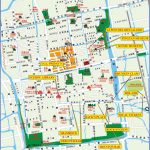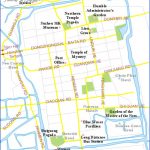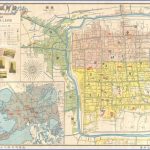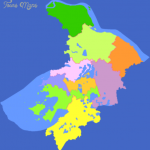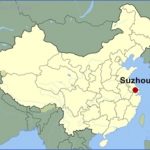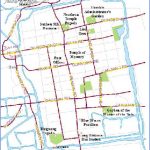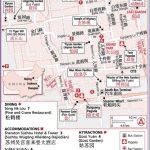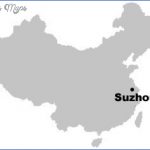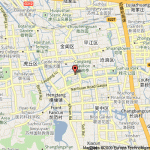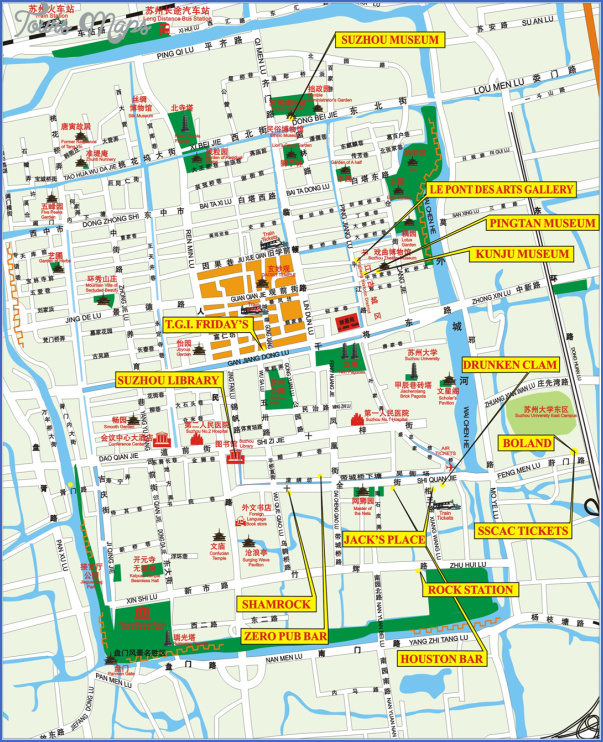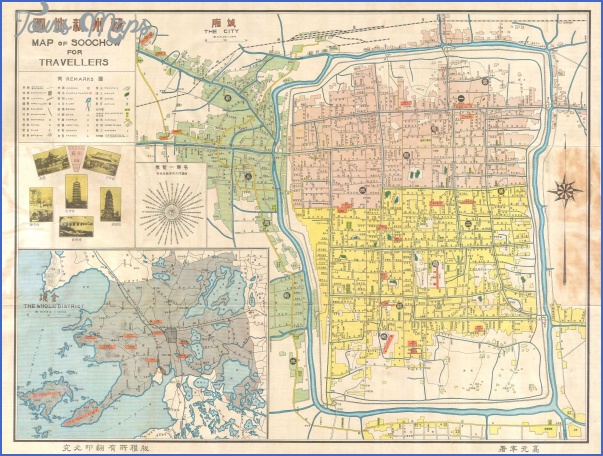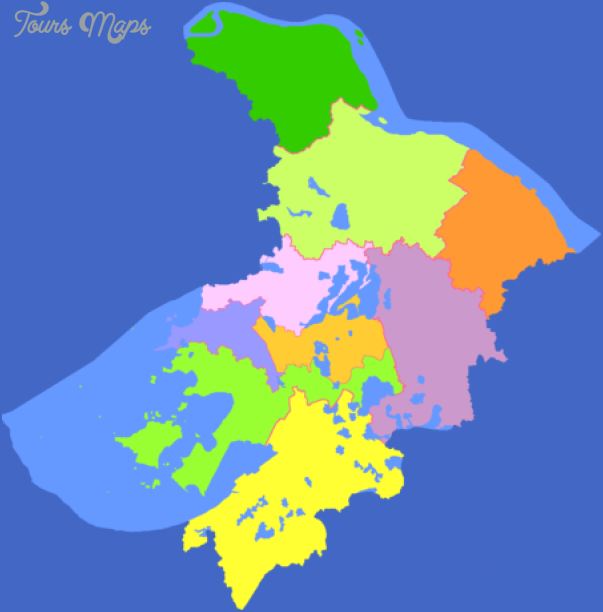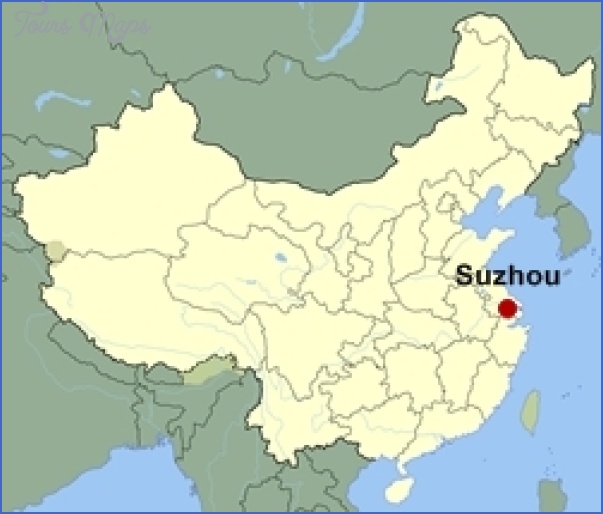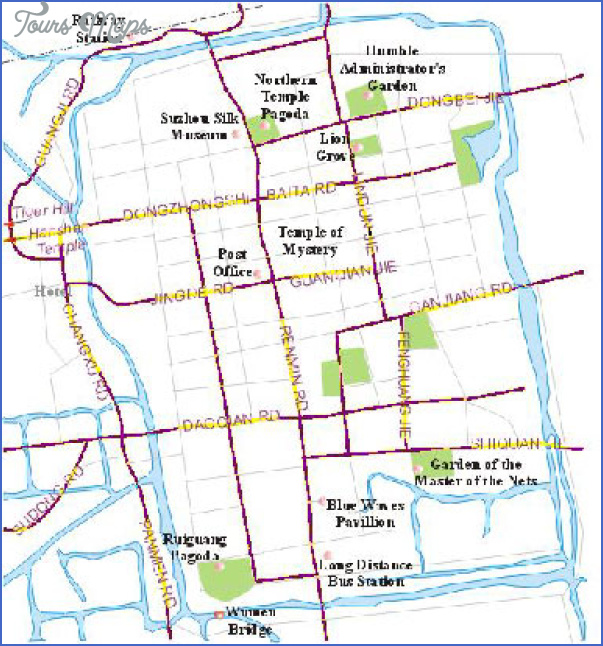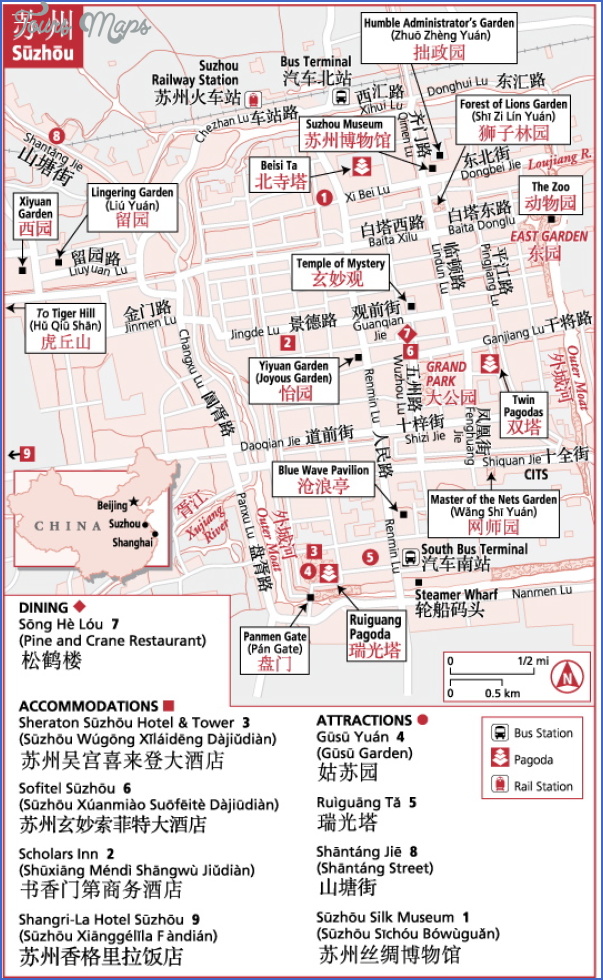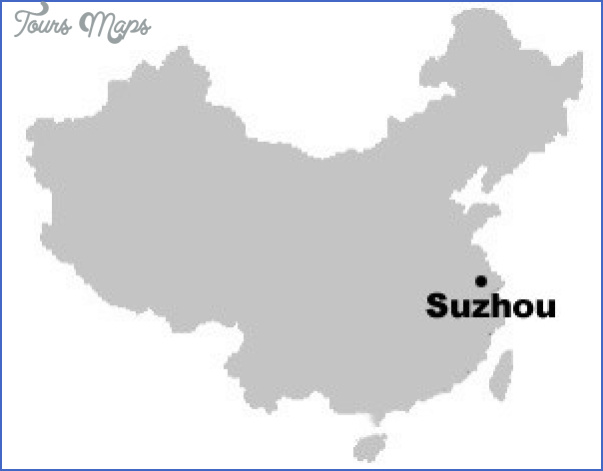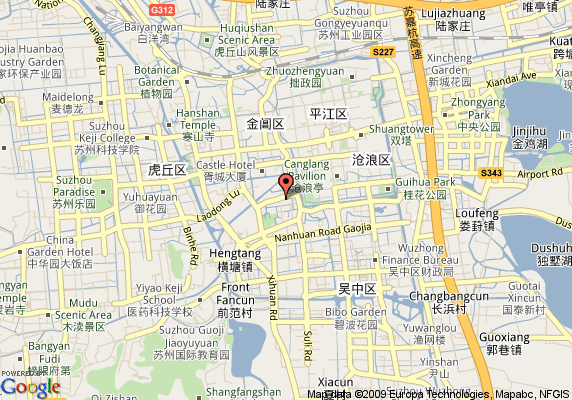Province: Jiangsu. Area: 119sq.km/46sq. miles Population: 700,000 (conurbation 5,310,000)
Suzhou (120°36’E, 31°19’N) lies south ofthe river delta ofthe Chiangjian on the eastern bank of the Taihu Lake in the south-east of Jiangsu province. It is a good hour by train from Shanghai, four hours from Nanjing and sixteen hours from Beijing. A dense network of roads connects it with other cities in the province and also with Shanghai and Hangzhou. As the city is on the Imperial Canal Suzhou can offer tourists the possibility of a short crosscountry cruise as far as Hangzhou.
The Imperial Canal is one ofthe many canals which flowthrough the city and which have given it the title of “Venice of the East”. Suzhou is also famed for its gardens which gave it another name, “Heaven on Earth”. As far as trade is concerned, Suzhou lies at present in fourth place after Shanghai, Tientsin and Beijing. The manufacture of cotton and silk play a central role in the economy, followed by chemical production and light industry. Traditionally the art of embroidery is important.
Suzhou is over 2500 years old. He Lu, the ruler ofthe Wu state, proclaimed Suzhou as capital ofthe empire in 484 b.c., and in 514 b.c. he built a defence wall surrounding the city; this is no longer in existence. According to some old documents the wall was 23.5m/26yd long and had sixteen gates. Despite numerous urban attacks which took place throughout the centuries, the historic city centre is barely unchanged in its plan. Of the eight gates, which are not situated by the water, only two have been preserved.
From the 5th c. onwards many civil servants, traders, and scholars settled here and laid out magnificent gardensto enhance the appearance of their houses. Suzhou developed into an economic and cultural centre, mainly as a result ofthe building ofthe Imperial Canal in the 6th c.
Under the Ming dynasty (1368-1644) this was the wealthiest city in the south-east of China. In 1860 during the Taiping uprising Suzhou was the victim of destruction.
The one-acre Garden of Harmony, situated in the city centre in Renmin Lu, Garden of offers the visitor enchanting scenery which seems to change with every Harmony step. These grounds were the private property of the Chancellor Wu Kuan (Yiyuan) during the Ming period (1368-1644), and were referred to as the “Daguan Yuan” inthefamous novel “The Dream ofthe Red Room”. Towardsthe end of the 19th c. the gardens were relaid by a government official in accordance with the plans of a well-known artist, incorporating features from other gardens. A pathway divides the garden.
The Garden ofthe Master of the Nets is situated in the south ofthe city near the modern Suzhou hotel. In 1140 the chief of the imperial chronicler’s office, whose nickname was “Master of the Nets”, had a residence built here. This garden, known particularly for its scenic beauty and variety, also incorporates several buildings.
The Garden ofthe Pavilion of Azure Waves, also situated in the south ofthe city, is one of the oldest in China, Even in the middle of the 10th c. it surrounded a general’s villa. A century later a famous poet bought the villa and had a pavilion built in the garden. He gave itthe poetic name Pavilion of the Azure Waves. Between the 13th and 14th centuries the estate served as a Buddhist monastery; during the Ming dynasty (1368-1644) it reverted to private ownership. Owing to Buddhist influence the two-acre garden offers some features of special interest which distinguish it from other gardens in the city. These include a low surrounding wall with large openings, and a double arcade connecting the inner and outer sections. In the middle ofthe grounds is an artificial hill on which stands the Pavilion ofthe Azure Waves.
This seven-acre garden in the west of the city was laid out by a Mr Liu in 1800 on the site of a park ofthe Ming period (1368-1644); it is joined to the neighbouring West Gardens. With the Garden of the Humble Administrator, the Summer Palace in Beijing and the Imperial residence in Changde it enjoys special protection as one ofthe most famous garden complexes of China.
The garden is certainly the most beautiful in Suzhou. It boasts a pool, several buildings, a man-made hill and a grove of peach trees. Particularly impressive is the pool with its surrounding pavilions and hills. Across the water leads a covered pathway on the walls of which hang over three hundred stone tablets engraved with old characters.
Also noteworthy are the delightful carvings in the Yuanyang and Wufengxian Halls.
Pavilion in the Garden ofthe Master of the Nets A peculiarity is the Cloud-high Summit (Guanyun Fen), a 7m/22ft high Taihu stone. The West Garden lies to the west ofthe Garden of Mr Liu, with which it was West Garden originally connected. In the 16th c, the park was the private property of a (Xiyuan) high official ofthe imperial court. Following his death his son converted the site into a Buddhist monastery. In 1860 the garden was destroyed in the war, although it was relaid only a few years later. Among the numerous buildings, the Luohan Hall (Luohan Tang) is particularly impressive, it houses over 500 gilded statues of Buddhist saints, and a statue of the thousand-armed goddess of mercy carved from the stump of a camphor tree. The Lion Grove to the north of Suzhou is famed for its man-made hills -jtLion Grove formed from the unusual Taihu stone (limestone from the Taihu Lake). It (Shizilin) was laid out in 1350 in a temple area, and is one of the most famous old gardens in the city. The garden’s name derives from the largest rock, which has the shape of a lion.
The picturesque Garden of the Humble Administrator, one of the best known in Suzho, came into being in the 16th cž on the site of a former Buddhist monastery, to the north of the Lion Grove. The first owner, the retired minister Wang Xiancheng who named this garden, was inspired by the old saying “water the garden and plant vegetables, this is the occupation ofthe knowledgeable civil servant”. His son apparently lost the garden in a game of chance. The site is divided into western, middle and eastern sections, the middle section is of particular interest to the visitor. Numerous towers and pavilions rise up on the banks of the pools, which occupy three fifths of the area, creating the impression that the whole garden is floating on water.
Directly beyond the entrance is the beginning of the eastern section. Following the visitor’s route the sights are: the Orchid and the Snow Palaces, the Hill of Cloud Hunting (Zhuiyun Feng), the Pavilion ofthe Spring of Heaven (Tianquan Ting), the Villa of the Fragrant Journey (Shuxiang Guan) and the Pavilion ofthe Beautiful Landscape (Fangyan Ting). In the middle garden are several pavilions, small villas and bridges arranged around a pool, in the middle of which rises a hill. Among the best-known buildings here are the Palace of the Distant Fragrance (Yuanxiang Tang), The Pavilion of the Four Winds (Hefengsimian Ting), the Pavilion of the Wind in the Pinewood (Songfeng Ting), the Pavilion of Waiting for Frost (Daishuang Ting) and the Bridge of the Fleeing Rainbow (Xiaofeihong).
Suzhou Map Photo Gallery
Maybe You Like Them Too
- The Best Cities To Visit in The World
- World’s 10 Best Places To Visit
- Coolest Countries in the World to Visit
- Travel to Santorini, Greece
- Map of Barbados – Holiday in Barbados

